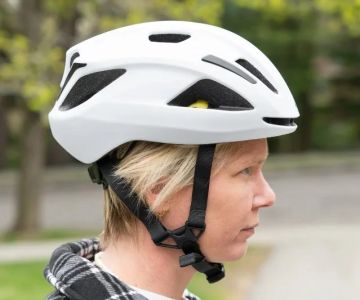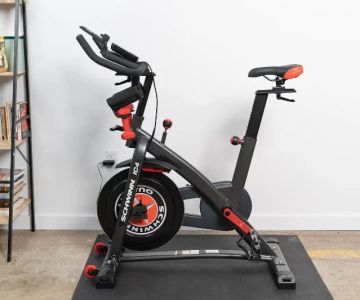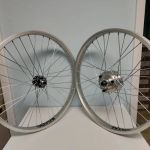
- 1. Understanding Heart Rate Zones
- 2. Why Heart Rate Zone Training Works
- 3. How to Train with Heart Rate Zones
- 4. Monitoring and Adjusting Your Training
1. Understanding Heart Rate Zones
Heart rate zone training is a popular and effective method to tailor your workouts for specific fitness goals. Heart rate zones are typically divided into five different ranges based on your maximum heart rate (MHR). These zones help you target specific physiological adaptations, from fat burning to cardiovascular endurance improvement.
To understand heart rate zones, you first need to calculate your maximum heart rate. A common formula is:
Max Heart Rate = 220 - your age
Once you have your MHR, you can calculate the percentage of your maximum heart rate for each zone. The five zones are:
- Zone 1: Very Light (50-60% of MHR) – Ideal for warm-ups, cool-downs, and recovery sessions.
- Zone 2: Light (60-70% of MHR) – Best for improving basic endurance and fat burning.
- Zone 3: Moderate (70-80% of MHR) – Enhances aerobic fitness and endurance.
- Zone 4: Hard (80-90% of MHR) – Increases lactate threshold and anaerobic capacity.
- Zone 5: Maximum Effort (90-100% of MHR) – Used for short bursts of intense effort, improving speed and power.
2. Why Heart Rate Zone Training Works
Training with heart rate zones provides a number of benefits that help you work smarter, not harder. Here’s why this method works:
- Optimizes Your Training Efforts: By staying within a specific heart rate zone, you can target the exact energy system you want to improve, whether it’s building endurance or burning fat.
- Prevents Overtraining: Monitoring your heart rate helps prevent you from overtraining and ensures you’re not pushing your body beyond its limits.
- Improves Performance: Consistent training within the optimal heart rate zone can lead to significant performance gains over time, whether you’re aiming for faster running times, greater endurance, or increased stamina.
- Helps Track Progress: By training in specific heart rate zones, you can monitor improvements and track how your body adapts to different levels of exertion.
3. How to Train with Heart Rate Zones
Training with heart rate zones requires a few key steps to ensure you’re hitting the right intensity level for your goals. Here's how you can train with heart rate zones:
- Step 1: Calculate Your Maximum Heart Rate (MHR): As mentioned, the first step is to calculate your maximum heart rate using the formula: 220 - age.
- Step 2: Define Your Training Goals: What are you trying to achieve with your workout? If you're looking to burn fat, Zone 2 is ideal. If your goal is to build endurance, Zone 3 will be most effective. For speed and power, focus on Zone 4 and Zone 5.
- Step 3: Monitor Your Heart Rate: You can use a heart rate monitor or fitness tracker to keep track of your heart rate throughout the workout. This will help you stay within the desired zone.
- Step 4: Adjust Your Intensity: During your workout, adjust your pace based on your heart rate zone. If your heart rate falls too low, increase the intensity of your exercise. If it gets too high, reduce the intensity to stay within your target zone.
- Step 5: Progressively Increase Difficulty: As you get fitter, you’ll notice that your heart rate may stay lower at the same intensity. You can increase the intensity of your workout to continue improving.
4. Monitoring and Adjusting Your Training
Effective heart rate zone training requires regular monitoring and adjustments based on your progress. Here are a few tips for tracking your training:
- Track Your Resting Heart Rate: Monitoring your resting heart rate over time can give you insight into your cardiovascular health and fitness progress. A lower resting heart rate typically indicates improved heart efficiency.
- Adjust for Fatigue: If you’re feeling fatigued, it’s important to adjust your training to avoid overtraining. Lowering your intensity and incorporating recovery days can prevent burnout and injuries.
- Progressive Overload: Gradually increasing the intensity of your workouts will ensure you continue to challenge your body and improve your performance. You can adjust your target heart rate zones to reflect your fitness level.
Heart rate zone training offers an efficient way to reach your fitness goals, whether you're an athlete looking to improve performance or a beginner aiming for better cardiovascular health. If you're serious about getting the most out of your training, tracking your heart rate zones is an excellent strategy.
For more tips on fitness tracking and the best heart rate monitors, visit Cycling Guider for the best products and services.







 Trek Bicycle Albuquerque4.0 (916 reviews)
Trek Bicycle Albuquerque4.0 (916 reviews) Trek Bicycle Orlando College Park4.0 (485 reviews)
Trek Bicycle Orlando College Park4.0 (485 reviews) Gemini Bicycle Products0.0 (0 reviews)
Gemini Bicycle Products0.0 (0 reviews) Konocti Bicycles4.0 (21 reviews)
Konocti Bicycles4.0 (21 reviews) Chucks Bikes5.0 (103 reviews)
Chucks Bikes5.0 (103 reviews) Surf-Wheels 'n E-Bikes4.0 (188 reviews)
Surf-Wheels 'n E-Bikes4.0 (188 reviews) How to Teach Kids to Ride a Bike: A Step-by-Step Guide for Parents
How to Teach Kids to Ride a Bike: A Step-by-Step Guide for Parents Tips for Riding on Busy City Streets: Smart Strategies for Urban Cyclists
Tips for Riding on Busy City Streets: Smart Strategies for Urban Cyclists Best US National Parks for Mountain Biking: Ride Epic Trails Across America
Best US National Parks for Mountain Biking: Ride Epic Trails Across America Best Aero Helmets for Time Trials and Racing
Best Aero Helmets for Time Trials and Racing How to Clean and Lubricate Your Bike Chain Like a Pro
How to Clean and Lubricate Your Bike Chain Like a Pro 10 Must-Have Items for Long-Distance Cycling Trips
10 Must-Have Items for Long-Distance Cycling Trips